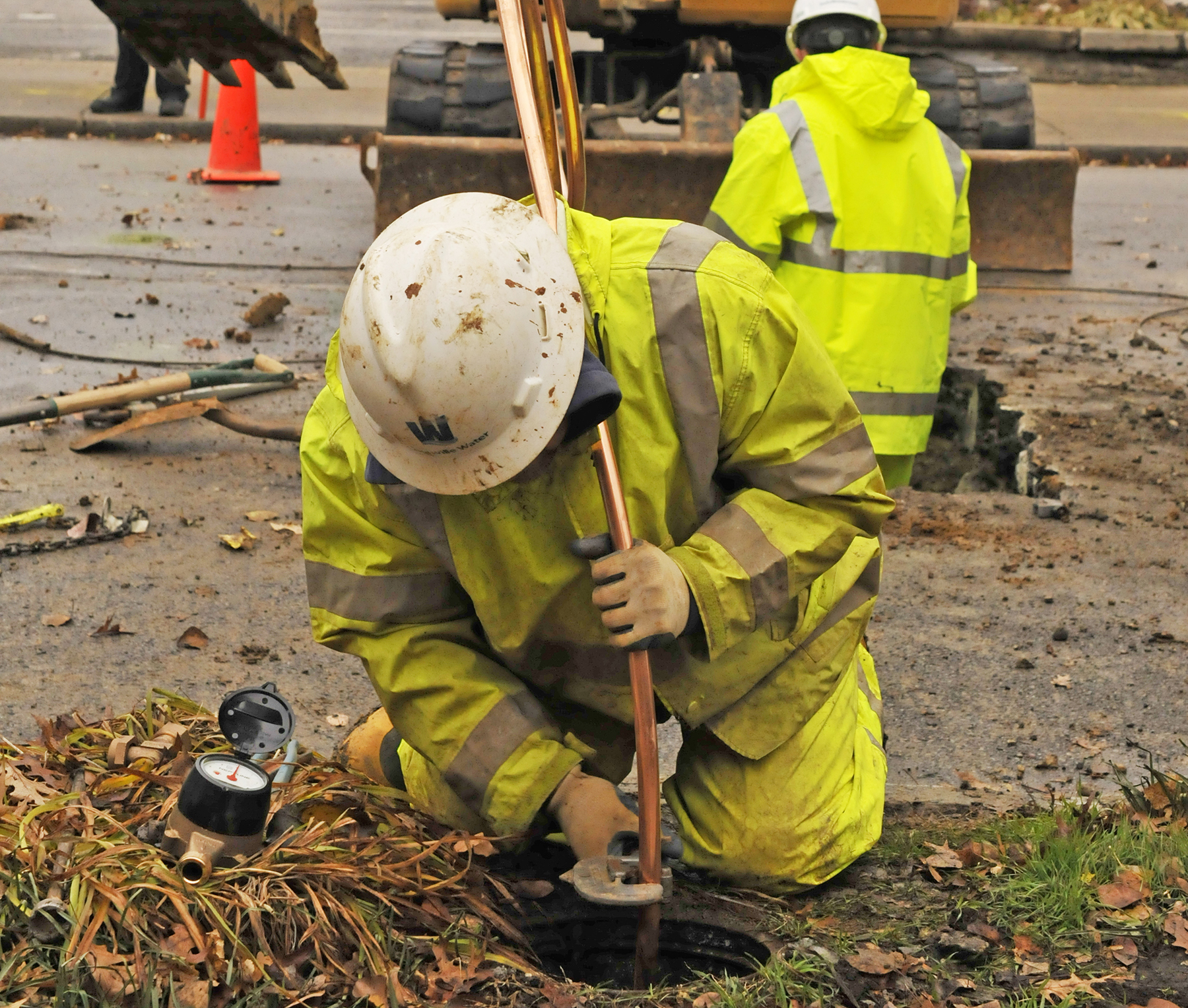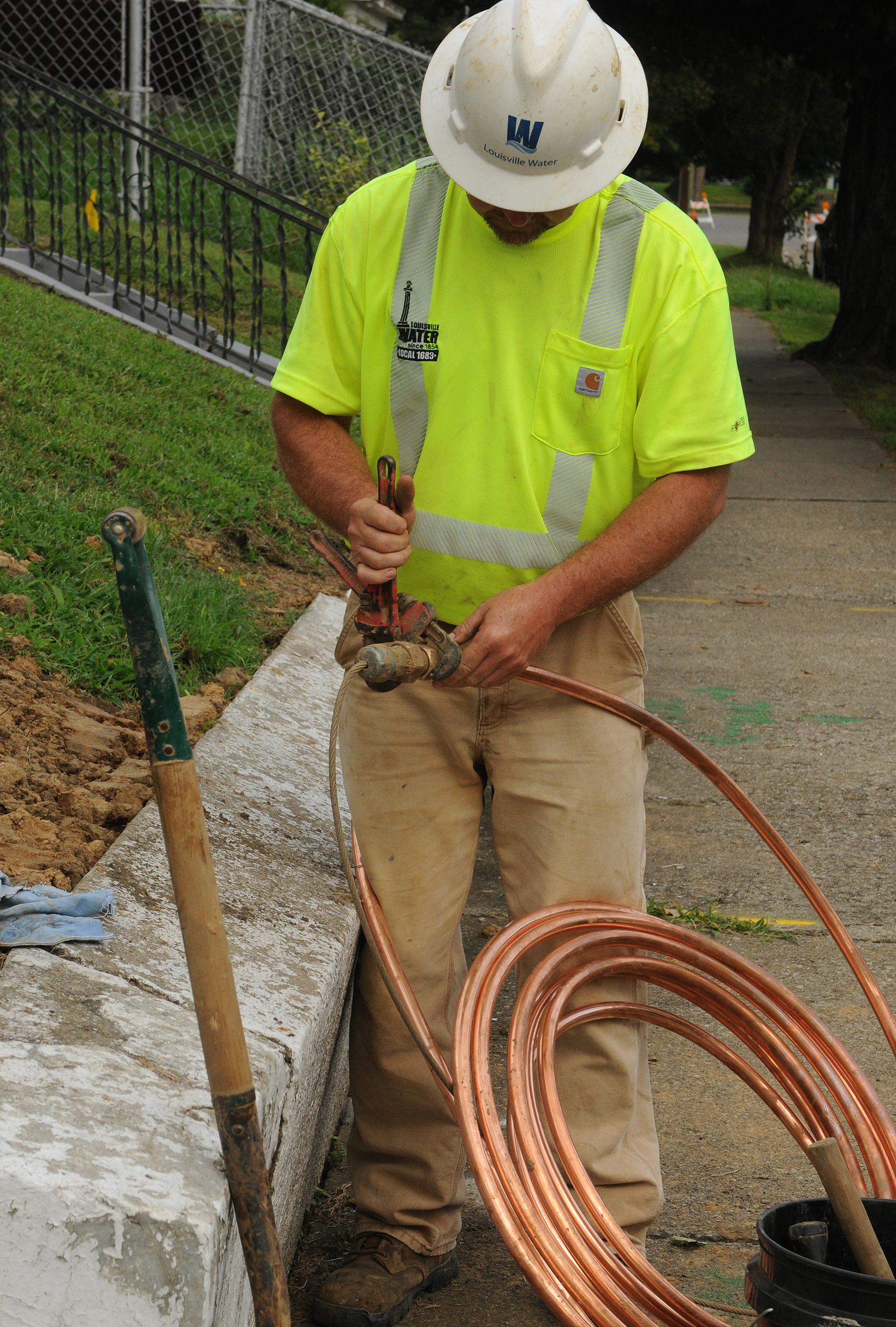
By Jeff Gunderson
The U.S. Environmental Protection Agency’s Oct. 16 deadline is fast approaching and water utilities across the U.S. are preparing to submit their inventories of lead service lines, a key provision of the Lead and Copper Rule Revisions.
Finalized in December 2021, the LCRR is part of a multiyear regulatory framework to address the public health risks posed by lead service lines.
Further reading:
- Louisville Water completes its multiyear lead pipe replacement project
- U.S. EPA proposes 10-year deadline to remove lead service lines
- How the Flint water crisis has impacted U.S. lead-pipe removal efforts
To comply with the LCRR, water utilities must classify all publicly and privately owned service lines as either known lead, non-lead, galvanized requiring replacement, or lead status unknown. The inventories must be publicly available, and water systems need to be prepared for tier 1 public notification in the event of a lead action level exceedance. Additionally, water utilities must notify customers if their service lines are classified as lead, GRR, or lead status unknown.
As utilities submit their inventories, they are undoubtedly looking ahead to the next phase: the full-scale removal of all lead lines. The proposed Lead and Copper Rule Improvements, publicly released in November 2023, aim to accelerate this effort by setting a 10-year deadline for the complete replacement of all lead and GRR service lines. Some utilities have already begun this process. Understanding the roadblocks they have encountered, including the challenges faced during the inventory phase, offers insights into what lies ahead.
Detective work
Organizing systemwide inventories of lead service lines has required water utilities to dig deep into their historical records, past reports, field inspections, maintenance logs, and other legacy documents. Additionally, many service lines are decades old, and the task of locating them has been complicated by evolving recordkeeping practices over time, according to Steve Via, director of federal relations at the American Water Works Association.
“We’ve seen changes in how records are kept, and the management or ownership of water systems have also changed,” Via said. “The process typically involves extracting as much information as possible from written and electronic archives, and then looking for opportunities to corroborate or add to that data. For instance, field crews can capture supporting information based on what they encounter during routine tasks like installing new meters or performing line maintenance. Information is being compiled in databases and organized in (geographic information) systems.”
For the LCRI rule, Via said analytics will play a larger role. “Looking back historically where lead and GRR lines tended to be installed, the factors that contribute to the likelihood of those service lines being present have been turned into algorithms for better predicting their locations,” he said.

In 2020, the Louisville (Kentucky) Water Co. successfully completed a multiyear project to identify and remove 100% of its publicly owned lead service lines. The utility has also focused on privately owned lines with its Private Lead Service Line Replacement Program, launched in 2017, which now covers 100% of replacement costs for customers. For the Oct. 16 deadline, Louisville Water’s complete inventories include about 300,000 service connections, of which there are about 48,000 possible private lead lines. Louisville Water has contacted customers whose private service line material is unknown, meaning they may have lead service lines.
“Our annual reports, dating back to 1858, have been a vital resource throughout this process,” said Louisville Water President and CEO Spencer Bruce, P.E. “For example, these records show that Louisville Water stopped using lead service lines after World War II. This greatly helped us in preparing our inventories to meet the LCRR deadline.”
Kelley Dearing Smith, Louisville Water’s vice president of strategic communications and marketing, compared the process of identifying the utility’s complete inventories with detective work. “We had to comb through old notes, the annual reports, and all the work tickets we had kept,” she said. “We even brought back a retiree who worked here in the 1980s to help navigate the records.”
Similarly, Greater Cincinnati Water Works had excellent records, including data showing that lead service lines were prohibited starting in 1928. “We were fortunate to have an extensive archive of branch cards showing when a plumber or property owner purchased a meter and activated a new service line,” said Kevin Kappers, P.E., GCWW’s lead program manager. “Based on our building codes, we could determine what material was used for each line, including the last lead line sold.”
GCWW also kept detailed records of water main replacement projects after 1928, including the length of copper installed on each service line and whether a coupling was needed to reconnect a lead line. “This data was crucial for building our inventory,” Kappers said. Anytime GCWW performs maintenance or replaces service lines, the material that is found is documented in an app, which updates the utility’s records in real time.
Preparing for the next phase
The EPA has proposed a 10-year replacement period, from 2027 to 2037, for utilities to remove all lead service lines, allowing time to organize the logistical complexities and financing for such a large undertaking.
Currently, GCWW replaces about 1,200 lead service lines a year. To remove its total lead service line inventory by 2037, the utility would need to ramp up to over 3,000 replacements each year starting in 2027. “There is obviously a lot that goes into gearing up for that kind of growth,” Kappers said. “In addition to funding, finding qualified contractors will be a major consideration. In our region, we’ll be competing with neighboring cities for the same contractors.”
Maybe one of the biggest challenges that water systems face in replacing private lead service lines is securing cooperation from customers. Near the end of 2021, Cincinnati approved a measure to cover the entire cost of a replacement, but this resulted in only a 50% participation rate.
Kappers offered a reason: general mistrust of government. “That forced us to rethink how to get people’s attention,” he said.
GCWW then created an outreach program tied to water main replacements. Every time a lead water main is replaced, the utility contacts all customers along that street to encourage them to sign up for a service line replacement during the project. “It takes a huge effort, and our success rate has improved to around 80%,” Kappers said. “There’s still room for improvement.”
Of Louisville Water’s 48,000 customers whose status of their private lines is unknown, about 4,000 to 5,000 are estimated to have lead service lines. Moving forward, the utility’s goal is to locate these service lines and persuade those customers to have them replaced at no cost.

“The challenge for us, which is true for many utilities, is finding the workforce and resources,” Bruce said. “We need to contact those customers, identify each lead line, and replace enough each year to meet our targets.”
To help with the identification process, many utilities have developed customer-facing portals that allow people to upload photos of their water service lines. But participation rates have been low, according to Dearing Smith. “Utilities that invested thousands of dollars in these portals have found that the (return on investment) is just not there,” she said. “That’s true for Louisville Water as well.”
To successfully reach its customer base with unknown lead status, Dearing Smith anticipates a very large effort to have face-to-face interactions. “It’s boots-on-the ground in the neighborhoods and asking customers to let us inside their homes,” she said. “It will also be important for staff knocking on doors to reflect the people they speak with. This is an opportunity for us to continually grow the public’s trust in Louisville Water.”



